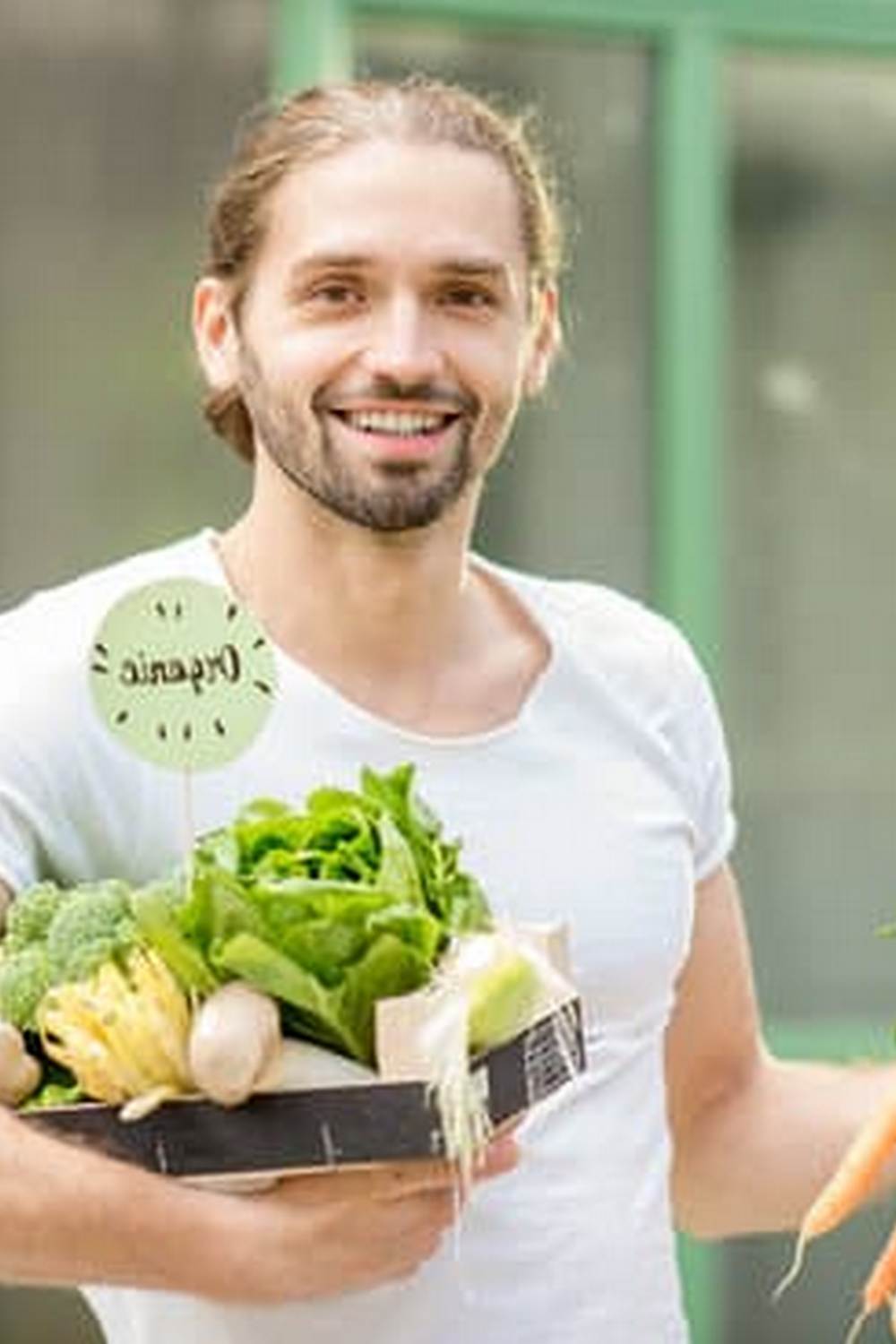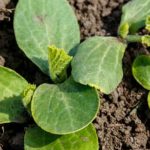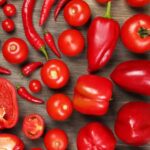As the end of summer approaches, it’s essential for vegetable gardeners to prepare for the transition into fall and winter. This time of year is crucial for ensuring a successful harvest and preparing the garden for cooler temperatures. In this article, we will explore the best vegetables to plant at the end of summer, techniques for extending your vegetable garden into the fall, and how to protect your plants from frost and colder weather.
The end of summer marks a shift in the gardening season, with different vegetables thriving in cooler temperatures. It’s important to understand which crops are suitable for late summer planting and how to care for them during this time. Additionally, knowing when and how to harvest these vegetables, as well as preserving and storing them, is key to making the most out of your end-of-summer crop.
Furthermore, gardeners must be aware of common pests and diseases that become prevalent towards the end of the growing season. Identifying these issues early on and implementing natural or organic methods for control is essential for preserving your vegetable garden. Finally, we will discuss steps for preparing your garden for the next growing season and provide tips for planning a fall/winter vegetable garden.
Best Vegetables to Plant at the End of Summer
The end of summer is a crucial time for vegetable gardens as it marks the transition to cooler temperatures and the approach of fall. It is essential to prepare for this change in order to continue getting a bountiful harvest from your garden. Planting the right vegetables at the end of summer can help you extend your growing season and enjoy fresh produce well into the fall and even winter months.
List of Vegetables for Late Summer Planting
Some vegetables are well-suited for cooler temperatures and can thrive when planted at the end of summer. These include leafy greens like spinach, lettuce, and kale, as well as root vegetables such as carrots, beets, and radishes. Other options for late summer planting include broccoli, cauliflower, Brussels sprouts, and peas. These vegetables can withstand lower temperatures and will continue to grow even as the days get shorter.
Tips for Planting and Caring for Late Summer Vegetables
When planting these vegetables at the end of summer, it’s important to provide them with adequate water and ensure that they receive enough sunlight. Adding compost or organic fertilizer to the soil can help provide them with essential nutrients for growth.
Keep an eye on the weather forecast and be prepared to protect your plants if there is an unexpected frost. Regular weeding and pest control are also important during this time to ensure that your late summer vegetables have the best chance of thriving.
By choosing the right vegetables and providing them with proper care, you can continue to enjoy a productive vegetable garden well beyond the end of summer. Paying attention to these details will allow you to make the most out of your gardening efforts as you transition into the cooler months ahead.
Overall, thoughtful planning at this stage will give you a head start on preparing your garden for fall/winter while maximizing your harvest from late-season plantings.
How to Extend Your Vegetable Garden Into the Fall
The end of summer is a crucial time for vegetable gardens, as it marks the transition from the warm summer months to the cooler temperatures of fall. This period presents an opportunity for gardeners to extend their growing season and continue harvesting fresh produce well into the autumn months. It’s important to prepare for this transition by understanding which vegetables thrive in cooler temperatures and implementing techniques to protect plants from frost and colder weather.
One way to extend your vegetable garden into the fall is by utilizing techniques that prolong the growing season, especially in colder climates. This can include using row covers or cold frames to shield plants from freezing temperatures, as well as mulching to insulate the soil and regulate its temperature. Additionally, planting cold-hardy vegetables and taking advantage of microclimates within your garden can help ensure a successful fall harvest.
In order to successfully extend your vegetable garden into the fall, it’s important to know which vegetables are best suited for late summer planting. Some examples of these vegetables include broccoli, Brussels sprouts, carrots, kale, lettuce, spinach, and radishes. These crops are known for thriving in cooler temperatures and can withstand light frosts, making them ideal choices for end of summer vegetable gardens.
| Vegetable | Best Time to Plant |
|---|---|
| Broccoli | Late July – Early August |
| Kale | Mid-August – Early September |
| Spinach | Mid-August – Late September |
Harvesting Your End of Summer Vegetables
As the end of summer approaches, it’s time to start thinking about harvesting the last of your vegetable garden’s bountiful crops. Knowing when and how to harvest your vegetables is crucial to ensuring that you get the most out of your hard work throughout the growing season. Whether you’ve been nurturing tomatoes, cucumbers, or squash, each vegetable has its own ideal time for harvesting to ensure it reaches peak flavor and quality.
Guidance on Harvesting
The key to a successful end-of-summer harvest lies in understanding the optimal time to pick each vegetable. For example, tomatoes should be harvested when their color is fully developed and they give slightly under pressure. Cucumbers are best picked when they are firm and before they reach an overripe size. Similarly, squash and zucchini should be harvested while still tender and relatively small for the best taste.
Tips for Preserving
Once you’ve gathered all your end-of-summer vegetables, it’s essential to properly preserve and store them for later use. Many people choose to can or freeze their excess produce for use during the colder months. This ensures that nothing goes to waste and allows you to enjoy the fruits of your labor long after summer has ended.
Storing Your Harvest
Proper storage methods vary depending on the type of vegetable but generally involve keeping them in a cool, dark place with good airflow. Vegetables like tomatoes are often stored at room temperature until ripe and then transferred to the refrigerator if not used immediately. On the other hand, root vegetables such as carrots and potatoes should be stored in a cool, damp environment like a cellar or pantry.
The end of summer doesn’t have to mean the end of enjoying fresh produce from your garden. With some careful planning and proper preservation techniques, you can continue savoring your home-grown vegetables well into fall and winter.
Common End of Summer Garden Pests and Diseases
As the end of summer approaches, vegetable gardens are at a crucial stage where gardeners need to be vigilant about preventing and managing pests and diseases. This is a time when many common issues can arise, so it’s important to be proactive in protecting your plants. By identifying and addressing these problems early on, you can ensure that your crops remain healthy and productive as they near the end of their growing season.
One prevalent pest to watch out for at the end of summer is aphids. These small insects feed on the sap of plants, causing damage to leaves and spreading disease. To naturally control aphid infestations, consider introducing ladybugs or lacewings into your garden, as they are natural predators of aphids. Additionally, spraying affected plants with a strong stream of water can help dislodge and remove aphids.
Another common issue that arises towards the end of summer is powdery mildew. This fungal disease appears as a white powdery coating on plant leaves and stems, eventually leading to stunted growth and decreased yield. To prevent powdery mildew, ensure that plants have adequate air circulation by spacing them apart properly. Additionally, removing any affected leaves or plant parts can help prevent the spread of this disease.
In addition to pests and diseases, it’s also important to be on the lookout for signs of nutrient deficiencies in your plants as they reach the end of their growing season. Yellowing or discolored leaves may indicate that your plants are lacking essential nutrients like nitrogen or iron. Consider applying a balanced fertilizer to replenish these nutrients and support your plants through the final stages of their growth.
By remaining vigilant and taking proactive measures to address pests, diseases, and nutrient deficiencies, you can ensure that your end-of-summer vegetable garden thrives until the last harvest. Monitoring your plants closely during this time will set you up for a successful transition into fall and winter gardening.
Preparing Your Garden for the Next Growing Season
As the end of summer approaches, it’s crucial to start preparing your vegetable garden for the transition to fall and winter. One important aspect of this preparation is cleaning up and prepping the garden for the next growing season. This includes removing any dead or dying plants, clearing out debris, and organizing any gardening tools or supplies that may have accumulated over the summer.
Additionally, it’s a good time to take stock of your supplies and make note of what may need to be replaced or replenished before the next planting season begins. This could include things like potting soil, compost, mulch, seeds, and gardening gloves. By taking care of these tasks at the end of summer, you can save yourself time and effort when it comes time to start planting again.
It’s also a great opportunity to improve soil health and add nutrients in preparation for future crops. Consider adding organic matter such as compost or aged manure to the soil to boost its fertility. Making sure that your garden beds have proper drainage and are free from compacted soil will set you up for success in the coming growing season.
| Task | Recommendation |
|---|---|
| Cleaning Up Garden | Remove dead plants, clear out debris |
| Stocking Up on Supplies | Take inventory of supplies needing replacement |
| Improving Soil Health | Add organic matter such as compost or aged manure |
Fall/Winter Garden Planning
When it comes to the end of summer vegetable gardens, planning for the fall and winter seasons is essential for a successful transition and continued harvest. As the days become shorter and temperatures begin to drop, it’s important to strategize and prepare for the upcoming cooler months in order to make the most of your garden. Here are some tips for planning and organizing a fall/winter vegetable garden:
- Choose cold-tolerant crops: In order to have a thriving fall/winter garden, it’s important to select vegetables that can withstand chilly weather. Some excellent options include broccoli, Brussels sprouts, carrots, kale, lettuce, radishes, spinach, and winter squash.
- Consider season extenders: To protect your plants from frost and colder temperatures, you may want to invest in season-extending tools such as row covers, cold frames, or low tunnels. These can help create a warmer microclimate around your plants and extend the growing season.
- Plan for succession planting: Rather than planting all of your fall/winter crops at once, consider staggered plantings to ensure a continuous harvest throughout the cooler months. This method can help maximize yields and keep your garden productive.
By carefully selecting cold-tolerant crops, utilizing season-extending techniques, and planning for succession planting, you can set yourself up for a fruitful fall/winter vegetable garden. With thoughtful consideration and preparation, you’ll be able to enjoy an abundant harvest even as the temperatures start to drop.
In addition upcoming growing season before transitioning into winter. By reflecting on what worked well during the summer months along with any challenges faced will allow gardeners opportunity learn from their experiences while making improvements and changes for their next growing season.
Therefore,grow tents & hydroponics offers best insight in understanding methods applicable especially when trying something new or experimenting different gardening techniques. This way one is better prepared when planning their next growing cycle whether dealing with smaller spaces or larger forms of cultivation especially with limited window of growth depending on seasonal changes that governs distinct regions across various parts of North America such as Canada or Unites States.
Reflecting on the Successes and Challenges of the Summer Growing Season
As the end of summer approaches, it’s important for gardeners to reflect on the successes and challenges of their vegetable gardens. This is a pivotal time for evaluating what worked well and what could be improved upon in preparation for the next growing season. Taking stock of your summer garden can provide valuable insights and lessons that can be applied to future gardening endeavors.
One key aspect of reflecting on the summer growing season is assessing which vegetables thrived in the late summer months and which ones may have struggled. By understanding the performance of different crops, gardeners can make more informed decisions when planning for the next growing season. Additionally, taking note of any common end-of-summer garden pests and diseases that affected your plants can help in devising preventative measures for the future.
In addition to evaluating the successes and setbacks of the end of summer vegetable gardens, it’s important to acknowledge the hard work and dedication that went into nurturing these gardens throughout the summer. The experience gained from maintaining a vegetable garden at this time of year is invaluable and can be used to improve gardening techniques in the future.
By reflecting on both the positive outcomes and areas for improvement, gardeners can set themselves up for a more successful fall/winter growing season.
Frequently Asked Questions
What Vegetables Can I Plant at the End of Summer?
At the end of summer, you can plant vegetables like kale, lettuce, spinach, and radishes. These crops thrive in cooler temperatures and will be ready for harvest in the fall.
What to Do With Vegetable Garden at End of Season?
At the end of the gardening season, it’s important to clean up your vegetable garden. Remove any remaining plants, weeds, and debris. Add compost or mulch to prepare the soil for the next growing season. It’s also a good time to assess what worked well and what didn’t in your garden.
What Veggies Can Be Planted in August?
In August, you can plant vegetables that can tolerate the heat such as peppers, tomatoes, squash, and cucumber. These warm-season crops will continue to grow and produce before the cooler fall weather sets in. Be sure to water them regularly due to the summer heat.

If you’re looking to get into vegetable gardening, or are just looking for some tips on how to make your current garden better, then you’ve come to the right place! My name is Ethel and I have been gardening for years. In this blog, I’m going to share with you some of my best tips on how to create a successful vegetable garden.





